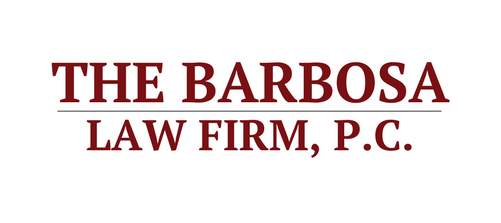No, we are not an Artificial Intelligence Law Firm. However, there may be some out there and you don’t even know it. The rise of artificial intelligence in legal practice is not a question of if but how—and nowhere will that transformation be felt more viscerally than in family law. Divorce touches the most intimate areas of people’s lives: finances, parenting, privacy, identity. Introducing AI divorce attorneys into that mix promises dramatic gains in access, cost-efficiency, and consistency—but also raises hard questions about ethics, accountability, bias, and the very nature of advocacy. This article maps the likely trajectory for AI in divorce practice over the next decade, describes practical use-cases, highlights risks and guardrails, and offers a vision for a hybrid future in which human lawyers and AI amplify each other’s strengths.
Why AI matters in divorce law:
Divorce systems in many jurisdictions are overloaded, expensive, and emotionally draining. Many people cannot afford an attorney at all; those who can often find themselves trapped in costly adversarial cycles that produce outcomes neither party really wants. AI promises to change that calculus in three big ways:
- Access and affordability. Automated document generation, guided settlement negotiation tools, and AI-powered chat interfaces can reduce the cost of routine work—drafting petitions, discovery requests, temporary orders, and settlement agreements—so that more people can get basic legal help. Lower cost creates access: clients with limited means could receive competent guidance instead of going unrepresented.
- Speed and efficiency. AI can process large document sets, extract relevant facts, and surface precedent or statutes in seconds. That reduces time to resolution for tasks that currently sap attorney hours—asset tracing, discovery review, calculation of support obligations, and preparation of financial exhibits.
- Consistency and scalability. Well-trained AI can apply statutory rules consistently and produce standardized, high-quality drafts. For solo practitioners and legal aid clinics, that consistency can make service scalable and predictable.
Practical AI divorce attorney use-cases:
AI tools for divorce will exist along a spectrum from narrow automation to near-autonomous representation:
- Document assembly and forms completion. Already realistic: an AI questionnaire can populate jurisdiction-specific forms and generate accompanying affidavits, financial statements, and parenting plans tailored to local rules.
- Legal research and drafting support. AI will summarize case law, suggest arguments, and produce first drafts of motions and briefs with citations to rules and statutes—accelerating human lawyers’ work.
- Discovery and evidence analysis. Machine learning will identify key documents, find inconsistencies, and produce timelines—especially useful in complex asset or fraud investigations.
- Predictive analytics. Based on aggregated outcomes data, AI will estimate probabilities for outcomes—custody arrangements, division of marital property, or likely alimony ranges—helping clients set realistic expectations.
- Negotiation and mediation bots. AI-driven negotiation platforms can simulate settlement conversations, propose tradeoffs, and even mediate low-conflict disputes using value-based algorithms.
- Virtual representation (limited). For routine uncontested divorces, some jurisdictions may allow AI-assisted filings where a supervised AI prepares and files documents with minimal human oversight.
Ethical and legal challenges:
With benefits come responsibilities. Lawyers and regulators will need to address several core issues before AI divorce attorneys can be widely trusted:
- Unauthorized practice of law (UPL). When does an AI cross the line from a tool to an independent practitioner? Jurisdictions will need clear rules: AI can assist and draft, but a licensed human should remain responsible for legal strategy and client counseling in most circumstances.
- Confidentiality and privilege. Client-attorney privilege is central in divorce. Using cloud-based AI raises questions about data residency, third-party access, and whether privilege is waived. Vendors and law firms must design systems that preserve privilege by encrypting data and using on-premise or privacy-first architectures.
- Bias and fairness. AI trained on historical divorce outcomes will reflect past inequities—gender, socioeconomic, or racial disparities. If predictive tools recommend “optimal” settlements that reinforce bias, vulnerable parties may be harmed. Auditing and bias mitigation will be essential.
- Transparency and explainability. Clients and courts will demand to know how AI arrived at conclusions. Black-box systems that offer no explanation will face resistance; explainable models that produce human-readable rationales will be preferred.
- Accountability and malpractice. If an AI-generated filing misstates an asset and a client suffers loss, who is responsible—the developer, the firm, or the supervising attorney? Ethical rules will evolve to require meaningful human oversight and to clarify liability.
Regulatory landscape and professional norms:
Bar associations and legislatures will play a decisive role. We can expect a patchwork approach at first—some states permitting AI-assisted limited-scope practice and others imposing strict guardrails. Anticipated regulatory trends include:
- Registration and certification. AI providers may need to register with regulators, disclose training data sources, and meet standards for accuracy and security.
- Mandatory human supervision. For complex or contested cases, rules will likely require an attorney to review and approve AI outputs before submission to court.
- Disclosure to clients. Firms using AI tools will need to inform clients about the role of AI, its limitations, and data use practices—mirroring informed-consent obligations.
- Algorithmic audits. Regulators may require periodic audits to assess bias, error rates, and fairness metrics.
Human + AI: the hybrid model that works best:
The most practical and ethically defensible path forward is a hybrid model where AI augments human lawyers rather than replaces them. Here’s how that partnership will likely look:
- AI as an assistant, not a replacement. Attorneys will delegate repetitive or data-heavy tasks to AI—document review, financial calculations, and draft generation—freeing time for strategic judgment, persuasive advocacy, and client counseling.
- Role specialization. Junior lawyers and paralegals will use AI to produce higher-quality work faster, allowing firms to deliver services at lower cost while maintaining human oversight.
- Client-facing empowerment. For low-conflict cases, AI-guided self-help platforms will let clients complete standard divorces with optional attorney review, increasing access while protecting quality.
- Mediators with AI tools. Mediators will use AI to model options, display tradeoffs visually, and help parties understand long-term consequences of proposed settlements.
Privacy-first design and data governance:
Data is the fuel for AI—but in family law, data is intensely personal. Ethical AI divorce platforms will adopt privacy-first architectures: end-to-end encryption, minimal data retention, differential privacy techniques for model training, and transparent data-use policies. Firms must also adopt robust cybersecurity practices and vendor due diligence to ensure that client data is protected from breaches and improper reuse.
Bias mitigation and model stewardship:
To prevent AI from perpetuating injustice, model builders will need to:
- Curate training data carefully, ensuring diverse representation and excluding biased outcomes when appropriate.
- Implement fairness-aware algorithms that adjust recommendations to avoid systemic disadvantage.
- Maintain human-in-the-loop review for sensitive recommendations like custody suggestions.
- Publish performance metrics so regulators and practitioners can evaluate reliability.
Economic implications and access to justice:
Widespread adoption of AI could significantly reduce the cost of uncontested and low-complexity divorces, allowing legal aid organizations to serve more clients and allowing middle-income families to afford counsel. However, two economic pressures deserve attention:
- Commoditization of routine work may reduce revenue for some small firms. That pressure will push many lawyers to specialize in high-value services—complex litigation, strategic negotiation, and counseling.
- Market concentration risk. If a handful of AI vendors dominate, they could exert outsized influence on norms and outcomes. Open-source and non-profit AI solutions for legal aid will be important to counterbalance this.
Practical recommendations for lawyers, courts, and policymakers:
For lawyers: embrace AI literacy. Learn what AI can and cannot do. Adopt AI tools that enhance quality and efficiency, but retain responsibility for client counseling, strategic decisions, and ethical oversight.
For courts: create clear rules for admission of AI-generated filings and for the use of predictive analytics in custody and support determinations. Encourage pilot programs that test AI for administrative efficiencies (e.g., triaging uncontested divorces).
For policymakers: require transparency, privacy protections, and fairness audits for AI vendors operating in the family law space. Provide funding for public-interest AI tools so access improvements aren’t limited to those who can pay.
The human factor: empathy, judgment, and discretion:
No matter how advanced, AI will struggle to replicate some essential aspects of legal practice in divorce: the ability to read a client’s emotional state, to counsel through grief, to make values-based judgments, and to craft arguments that resonate with a judge’s sense of fairness. These human skills—empathy, moral judgment, credibility—will remain premium services. The future of divorce law is not machines versus humans; it’s machines enabling humans to be more human where it matters.
A hopeful, realistic vision not just fantasy anymore:
Imagine a near-future divorce clinic where low-income clients first interact with a friendly AI intake system that explains options, generates court-ready forms, and estimates likely outcomes. Those who need more help are escalated to a human lawyer who receives a thorough, AI-curated case file—timelines, document summaries, asset maps—so the attorney can focus on negotiation strategy and client support rather than paperwork. Complex contested cases still require litigation lawyers, but with discovery and document review reduced from months to days. That future improves access, reduces cost, and reserves human talent for the highest-value work.
Conclusion:
“Artificial Intelligence” or AI divorce attorneys will not render human lawyers obsolete; they will reconfigure what legal practice looks like. The next decade will be about integrating AI in ways that expand access, improve quality, and preserve core legal values: confidentiality, fairness, and accountability. Success depends on thoughtful regulation, privacy-first engineering, active bias mitigation, and a professional commitment to using AI as a force-multiplier for human judgment—not a substitute. For family law—where law touches life—the best future is one in which technology eases burdens and human advocates preserve dignity.

